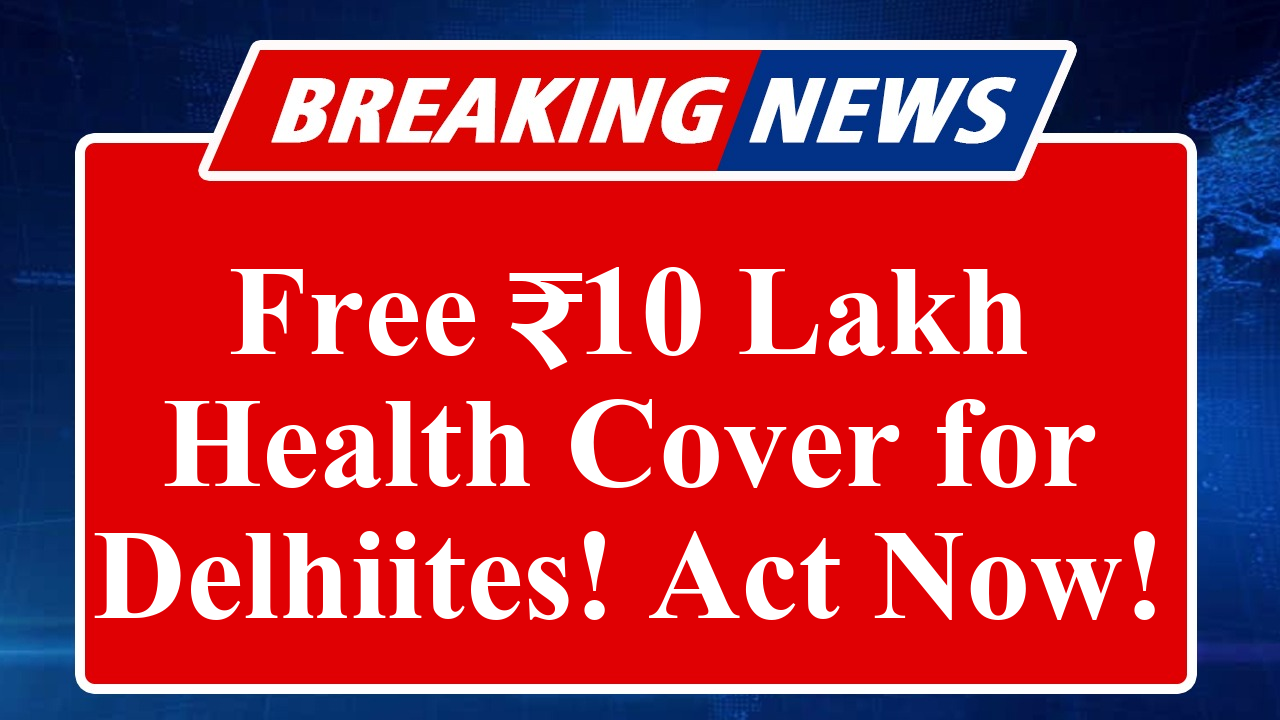Delhi’s government has launched the Ayushman Bharat PM-JAY scheme, providing free health coverage up to ₹10 lakh for 36 lakh residents, including seniors over 70. The initiative, rolled out on April 10, 2025, aims to ensure accessible healthcare for all, covering pre-existing conditions at over 30,000 hospitals nationwide. The Vaya Vandana Yojana further supports seniors with additional pension benefits.
Delhi’s Bold Step Toward Universal Healthcare
On April 10, 2025, the Delhi government officially rolled out the Ayushman Bharat Pradhan Mantri Jan Arogya Yojana (AB PM-JAY), a transformative health insurance scheme aimed at providing free medical coverage to approximately 36 lakh residents. This ambitious initiative, implemented after years of negotiations, marks Delhi’s entry as the 35th state or union territory to adopt the central government’s flagship healthcare program. The scheme offers up to ₹10 lakh in annual health coverage for secondary and tertiary care hospitalization, ensuring that economically weaker sections, informal sector workers, and senior citizens can access quality medical services without financial strain.
A key highlight of the program is the Vaya Vandana Yojana, launched on April 28, 2025, specifically targeting residents aged 70 and above. This supplementary scheme provides free treatment worth up to ₹10 lakh per individual, with no income criteria, making it distinct from the standard AB PM-JAY framework. On its first day, 4,666 Vaya Vandana cards were issued out of 4,671 requests, reflecting strong initial uptake. These cards store health records, check-up details, and emergency service information, ensuring seamless access to care at approximately 100 empaneled hospitals in Delhi and 30,957 hospitals nationwide.
Chief Minister Rekha Gupta, alongside Union Health Minister JP Nadda, emphasized the scheme’s role as an “assurance” rather than just insurance, built on trust and accessibility. At the launch event at Thyagaraj Stadium, Gupta distributed the first batch of Vaya Vandana cards, urging elected representatives to assist seniors with registration. The scheme covers all pre-existing conditions from day one, addressing a critical gap in private insurance plans that often exclude such ailments.
The initiative also extends to informal sector workers, including autorickshaw drivers, street vendors, sanitation workers, and frontline health staff like ASHA and Anganwadi workers, ensuring broad coverage. The Delhi government has committed to covering 235,000 families in the initial phase, with applications facilitated through the Ayushman portal, community health centers, government dispensaries, or sub-divisional magistrate offices.
Health Minister Pankaj Singh highlighted the scheme’s portability, allowing Delhi residents to access treatment even outside the city. He noted that rising medical costs and limited income often leave seniors vulnerable, and this program aims to alleviate those challenges. The state also signed a second MoU on April 10 for the Pradhan Mantri Ayushman Bharat Health Infrastructure Mission (PM-ABHIM), which will further bolster Delhi’s public health infrastructure.
However, the rollout has sparked political debate. The opposition Aam Aadmi Party (AAP) criticized the scheme, arguing it focuses on secondary and tertiary care while neglecting primary healthcare needs like routine check-ups for chronic conditions. Chief Minister Gupta countered by accusing the previous AAP government of delaying the scheme’s implementation due to political differences, which she claimed deprived Delhiites of critical healthcare benefits.
The scheme’s digital infrastructure is also evolving, with innovations like online medical assessments and seamless claim processing reducing turnaround times for cashless treatments. Industry trends indicate health insurance is growing rapidly in India, driven by digital transformation and increased awareness post-pandemic. Delhi’s adoption of AB PM-JAY is a significant step toward closing the gap in India’s low insurance penetration rate of 3.7%, compared to the global average of 7.23%.
Disclaimer: This article is based on recent news reports and official statements from government sources and media outlets like Hindustan Times, The Hindu, and Economic Times. Information is subject to change as new details emerge. Always verify with official health department sources for the latest updates on eligibility and benefits.

